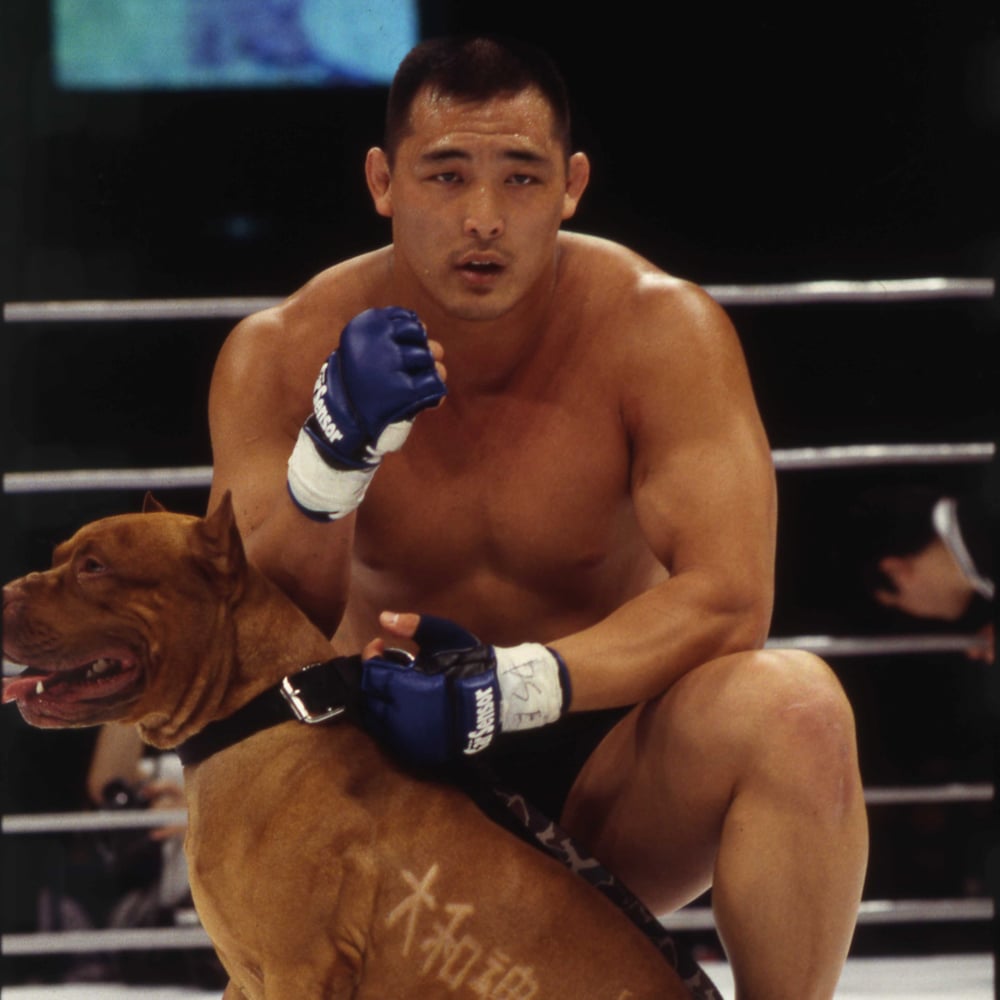
Issue 056
November 2009
Enson absorbed blow after blow from the feared striker, enduring Pride’s grueling ten-minute first round, and was carried back to his corner. The doctors, seeing the Hawaiian’s swollen and bleeding face, called the fight. Enson protested vehemently – he wanted to continue. He was ready to die in the ring. “To live as a man, die as a man – become a man,” is one of his most famous sayings.
This tenacity, this willingness to put himself in harm’s way in order to achieve a goal or ideal, has separated Enson from the pack throughout his career, and his life.
Enson originally visited Japan to play in a professional racquetball tournament. He knew about his heritage as a Japanese-American, but little of the country itself. A two-week trip turned into a three-month stay, a year, then six. Enson now lives in Japan and manages a string of successful MMA gyms as well as numerous other side businesses.
Like so many Hawaiians, Enson learned the ‘gentle art’ from Relson Gracie, and it would be his submission skills that he relied on in most of his fights. Enson started fighting “to control my nerves. I wanted to be able to be levelheaded and think straight, no matter what situation I was in. Fighting gave me a way to practice this.”
Enson debuted in Shooto as a heavyweight in 1995. A string of first-round wins made the MMA world sit up and notice. Enson was invited to the UFC where he broke wrestler Royce Alger’s arm at UFC 13 in 1997.
That same year Enson opened his first Purebred MMA gym. Purebred is now one of the best fighting teams in Japan, sending out fighters to Shooto, DEEP and more. Norifumi ‘KID’ Yamamoto got his start under Enson’s Purebred banner.
But 1997 would stand out for another reason in Enson’s mind: An exhilarating match against Frank Shamrock to decide the challenger for the UFC light heavyweight belt at the upcoming UFC Japan. After a frantic and heated exchange Shamrock dropped Inoue with a knee. Enson’s brother, Egan, darted into the ring and bowled Frank Shamrock over and into the ropes. The corners erupted as members of each team and the officials scrambled to contain the situation. Once things were under control, Enson was declared the loser by disqualification due to his brother’s actions.
The following year Enson fought Randy Couture in Vale Tudo Japan. Randy had just beaten Maurice Smith and taken the UFC heavyweight belt. Enson armbarred him in under two minutes, an impressive feat and one that Enson, when asked, will say was one of his finest moments.

Enson was approached by Pride FC, who had been impressed with his performances in Shooto. The unflappable Hawaiian gained the endless respect of the Japanese fans in his performances – against Heath Herring, Enson could be heard telling him to “go ahead and break it” when Heath had a deep armlock twisted on. Enson went to sleep in one of Nogueira’s masterful triangles. The press in Japan nicknamed him Yamato Damashii, ‘The Japanese Spirit’. They admired his attitude, his composure, and said he possesed the strong spirit of old Japan.
This resonated with Enson; it crystallized the ideals he had been cultivating throughout his fighting career. It would become his personal motto. “These words mean everything to me today,” he says. “It is the way I live and the way I will die.” An ancient code to live by. A body covered in tattoos. A thousand-yard stare and a respect for the cleansing power of violence. The inevitable comparisons between Enson and the yakuza, Japan’s organized crime groups, begin.
“To tell you the truth, I’m not yakuza. In Japanese, yakuza is boryokudan, which is translated as ‘violence group’. A lot of [them] physically assault people and welcome trouble. I don’t welcome trouble; I avoid it. Does being a yakuza mean you do business and have friendship with yakuza? Well, I do. Is that enough to make me a yakuza? No. I’m a fighter, I’m an MMA fighter, not a yakuza.” Enson meets the Japanese mafia on his own terms, and they respect that. “I do deal with a lot of ‘good’ yakuza and I wouldn’t ever get close to one unless he truly understands and incorporates the yamato damashii way.” Like moths to a flame, gangsters are drawn to Enson, to the life he leads. He, as a prize fighter, has a license to live by his principles. It is alluring, even for the underworld. A yakuza can become part of Enson’s family, but not the other way around.
Although Enson Inoue has not fought since 2004, he is fresh in many MMA fans’ minds, mostly due to his relationship with his fans. He maintains a regular blog, and converses daily with fans on forums and via email. Now 42 years old, Enson is still in training and asks fans to watch out for a return in late 2009. Whoever he fights must be ready to do whatever it takes to finish the fight. “I’d rather die than tap out,” he says.
Enson Inoue spoke with Matt Benyon.
Career Snapshot
1995
Debut, Shooto: Vale Tudo Access 3. Wins via TKO.
1997
Loses to Frank Shamrock. Opens Purebred MMA gym.
1998
Armbars Randy Couture, then-UFC HW champion.
1999
Debuts in Pride, wins via choke.
2002
Features in MMA documentary, Rites of Passage.
2007
Exhibition match at Mudo Spirit, Japan.
2008
Appears in David Mamet’s film, ‘Redbelt’ as Taketa Morisaki.
...









